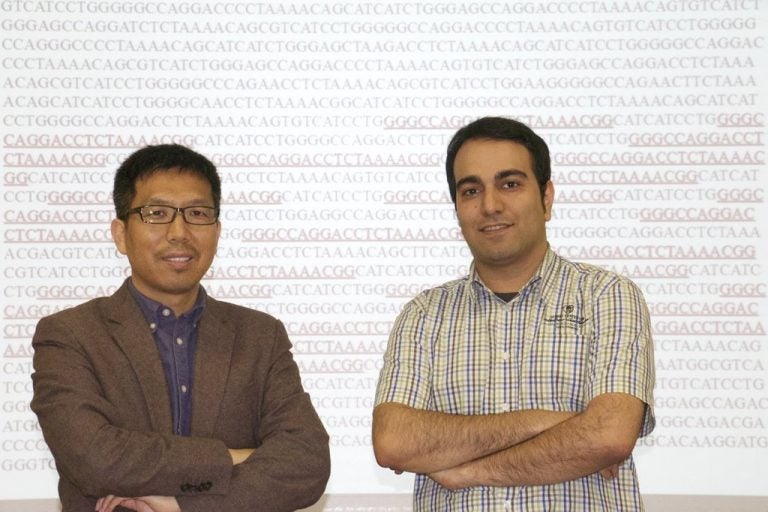Labeling and tracking multiple locations of the human genome in a live cell allows scientists to study structural changes in chromosomes and investigate cancer development.
Finding optimal locations for labeling in the human genome is a challenging task due to the size of our genome. University of Central Florida associate professor Shaojie Zhang, working with researchers at the University of Massachusetts Medical School, is helping solve that problem. As published recently in Nature Biotechnology, Zhang has helped to develop a tool that allows biologists to zero in on particular genomic sequences they’re researching.
“We are trying to help them achieve that goal, because the human genome is extremely huge,” said Zhang, an associate professor in the Department of Computer Science of the College of Engineering & Computer Science. “We have 3 billion letters, but they are not random; there’s a lot of structure inside the human genome. The question is, can we assign an address for a certain location of a particular chromosome?”
A chromosome’s position in a cell nucleus plays a role in our health and biology. By studying how they move within a nucleus, scientists hope to detect abnormalities that could shed light on how regular cells turn into cancer cells.
Zhang’s technology simplifies the task of finding appropriate targets to bar-code the genome. Those targets contain repetitive sequences that can be easily seen by binding what’s known as the CRISPR/Cas9 complex with a pair of fluorescent proteins. This new tool, known as CRISPRainbow, can locate and track as many as seven different DNA sites by using seven different colors simultaneously.
The software technology Zhang developed with his graduate student Ardalan Naseri builds on an earlier incarnation that was able to track three colors. “From a computer science point of view, it’s about efficiently mining a long string based on certain criteria” Zhang noted.
